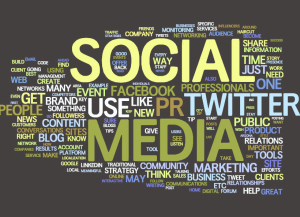 I devised a solution at work to attempt to read as many of the articles that we cover as possible. It's not a perfect solution, as it heavily depends on the writers taking the time to put their sources on the documents, but so far it has been working very well. I can get through two verticals in about 90 minutes. When I started testing the solution earlier this week, 90 minutes for two vertical might've been too much time. However, I discovered an AWESOME social media management tool called MeetEdgar that helps tremendously.
I devised a solution at work to attempt to read as many of the articles that we cover as possible. It's not a perfect solution, as it heavily depends on the writers taking the time to put their sources on the documents, but so far it has been working very well. I can get through two verticals in about 90 minutes. When I started testing the solution earlier this week, 90 minutes for two vertical might've been too much time. However, I discovered an AWESOME social media management tool called MeetEdgar that helps tremendously.
What is MeetEdgar?
MeetEdgar is different from other social media management tools in that it allows you to build up a queue for your accounts. So, instead of just scheduling five posts over the next five days, MeetEdgar will cycle through those five posts until you tell it to stop. The tool comes with a default schedule as well, so you don't even have to spend time arranging when you want each post to go live. Just upload the content and MeetEdgar will take care of the rest.
Oddly enough, I discovered MeetEdgar on Twitter after someone I followed tweeted that they just signed up. The tweet said something about "making sure your social media posts don't go to waste," or something to that effect. I was intrigued so I clicked the MeetEdgar handle to ultimately go their website. I watched their two-minute demo video and I was hooked. This was EXACTLY what I needed! And not just for this solution, but also for my job in general. Posting to our various social media accounts is a huge time suck for me. Although I only do two or three accounts per day, I have to spend the time finding something good to post, then crafting the post and then scheduling the post. All of that doesn't include checking for comments, following people, inviting people to the page etc.
MeetEdgar is instrumental to my solution because after I spend time initially uploading a ton of content to the Twitter and Facebook accounts for each of the verticals, I only need to spend about an hour or 90 minutes every day or every other day removing old content and uploading a couple of new posts. Besides that, each account will have 10 or 15 posts to cycle through over the course of the week. I don't have to worry so much about getting new content onto the Facebook page or the Twitter feed. Instead, I can spend that time perusing the content for the weekly newsletter, or looking for ideas for blog posts, infographics and other original content.
The Next Step is to Devote the Time
Besides the writers not doing their share and forgetting to put their stories on the doc, the other big hurdle that I have is to make the time to peruse articles every day. Every day doesn't easily lend itself to having 90 minutes to set aside. Meetings come up. Emergencies need to get taken care of. My boss prioritizes another project that requires my attention. I think if I make an effort to set aside time to read these articles, then my next steps would involve documenting ideas, creating the content, and possibly looking to automate other aspects of this system. But, for right now, the goals are to make perusing articles daily a habit and to stock MeetEdgar with lots of content for all of the accounts. Once MeetEdgar is taking care of and I have a really good grasp of the stories we're covering each day, I can then move onto other initiatives and figuring out how to make time for those initiatives.







 Social Media Optimization is usually considered as a part of online marketing, and is the optimizing of a site and its content to make it worth sharing on various social media sites. In short, we can say, SMO is making use of social media in order to promote a brand or a product or to generate publicity.
Social Media Optimization is usually considered as a part of online marketing, and is the optimizing of a site and its content to make it worth sharing on various social media sites. In short, we can say, SMO is making use of social media in order to promote a brand or a product or to generate publicity.